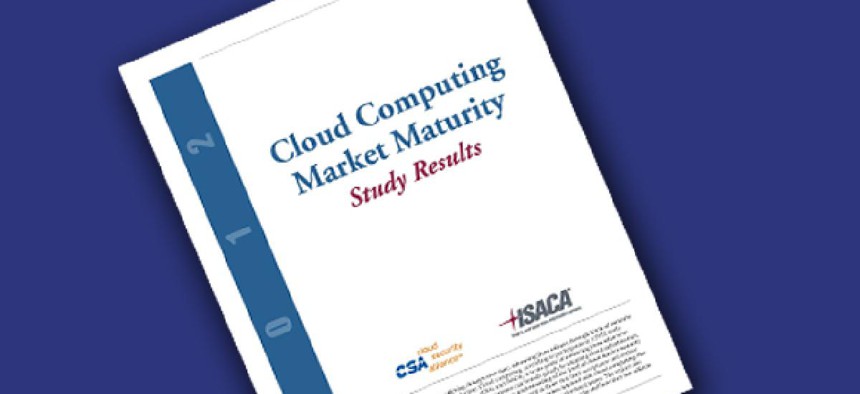The 10 biggest doubts executives and IT managers have about the cloud

What do IT leaders have confidence in? Not government regulations, exit strategies or data privacy, according to a new survey.
Government regulations, exit strategies from cloud arrangements and data privacy are among 10 concerns where confidence in cloud computing is lowest, according to a joint survey by the Cloud Security Alliance and ISACA.
The Cloud Market Maturity Study was conducted in the second quarter of 2012 to gauge the level of maturity and innovation in the cloud market. It includes responses from more than 250 participants from nearly 50 countries, from a global sampling of cloud users, providers, consultants and integrators in both commercial and government organizations.
Concerns about exit strategies resonate with federal IT managers who want to avoid vendor lock-in as they move their agencies’ applications to infrastructures hosted by cloud service providers. Federal IT managers need a cloud exit strategy to move data from one cloud service provider to another if, for instance, their provider does not meet service-level agreements or agencies’ regulatory and security requirements.
Related story:
What's missing from the cloud? An exit strategy.
Whether federal managers have made progress in this area still remains to be seen. Ninety percent of federal IT managers in a separate survey commissioned by Quest Software Public Sector and released in May 2011 said either that their agencies didn’t have an exit strategy or that they were unaware of one, according to the survey.
The Cloud Maturity Study reveals that cloud users in the 50 countries were least confident about the following issues (ranked on a scale of 1 to 5 from least confident to most confident):
1. Government regulations keeping pace with the market (1.80)
2. Exit strategies (1.88)
3. International data privacy (1.90)
4. Legal issues (2.15)
5. Contract lock in (2.18)
6. Data ownership and custodian responsibilities (2.18)
7. Longevity of suppliers (2.20)
8. Integration of cloud with internal systems (2.23)
9. Credibility of suppliers (2.30)
10. Testing and assurance (2.30)
While there are many positive indicators that support the planned adoption and perceived use and value of cloud services in the years ahead, there is a long way to go to get buy-in among business leaders, according to the survey.
“As a first step, we as an industry must still work to provide a clearer definition of what cloud is and how the many innovative and secure services can help positively impact today’s businesses,” said J.R. Santos, global research director at CSA.
“But we need to start at the top and engage senior management. Cloud needs can no longer be thought of as a technical issue to address, but rather a business asset to embrace,” Santos said.
Overall, respondents feel there is room for improvement when it comes to innovation in the cloud. Nearly one in four (24 percent) survey takers said that there is no or limited innovation in the market. Forty-three percent think there is a moderate level of innovation, while 33 percent report that the level of innovation in terms of products, services and business use is significant.
The survey results show that CIOs and IT management understand cloud the best and are most involved in driving cloud innovation in their organizations. But this limits cloud maturity and innovation because cloud computing continues to be viewed as a technical solution and not as a business enabler, said Yves LeRoux, a member of CSA and the ISACA Guidance and Practices Committee.
Overall, respondents remain moderately confident that cloud services are meeting service and strategy expectations and problems are being addressed. Many rated cloud services as providing confidence in strategy and problem resolution, indicating cautious optimism that cloud will advance in maturity and problems limiting its adoption will be addressed.





